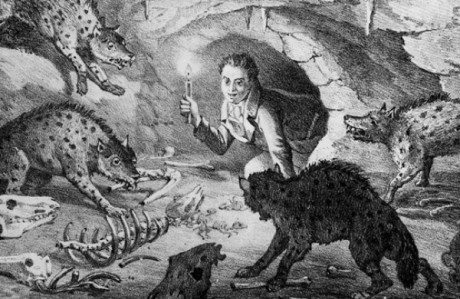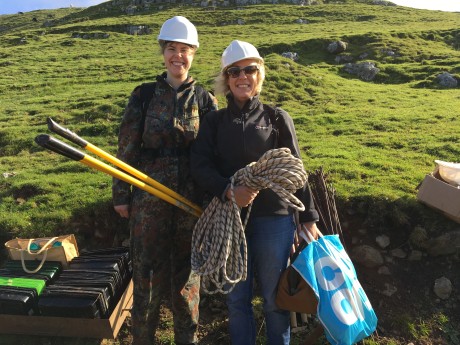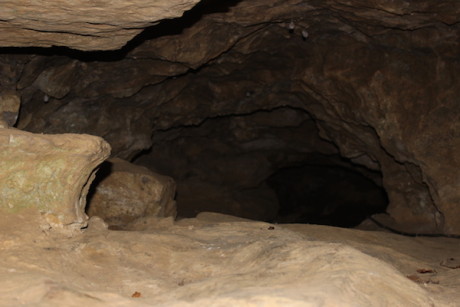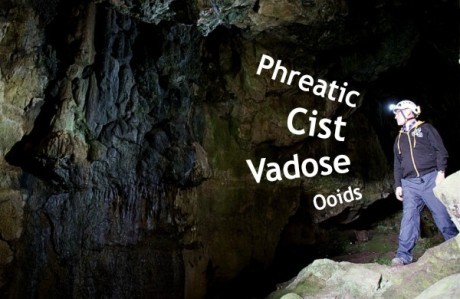
One day in the late 1800s an archaeologist acquired a hyena, and with it he came up with a theory that changed the world.
Picture the scene. You’re out walking in Yorkshire Dales and you come across a cave. Upon scrambling down into that cave, you find that it filled with animal bones. At first you assume they are the usual things like deer, cattle, sheep and maybe even a dog or two. But pretty soon it becomes clear that these are not like any bones you’ve ever seen before…
That’s exactly the scenario that faced John Harrison, the Rev William Buckland and numerous British scientists about 150 years ago. These bones were clearly not from any animals living in the British Isles, so how did they get here?
It’s exactly the same kind of assemblage that we’re dealing with from the Victoria Cave archive; lions, elephants, rhino and even hippo. As it turns out, these animals didn’t ‘get here’ – they lived here, albeit a very long time ago. But what’s all this got to do with a real, live hyena?
The road to Kirkdale Cave was littered with animal bones
Kirkdale Cave is a small, stream conduit cave that can be seen in a quarry close to Pickering in North Yorkshire. It was discovered in 1821 by workers who were digging out stone to repair potholes in local roads. John Harrison, a local surgeon, was walking along the newly repaired road when he noticed teeth and bones in the aggregate. But they certainly weren’t cattle…
He tracked the aggregate back to its source, and found the entrance to Kirkdale, which had been freshly exposed by the quarryworkers. He ducked inside, and found a thick layer of bone…
Along comes William Buckland – eater of animals
Word got out about the strange species inside the cave. Local naturalists began to visit, and that’s when John decided to contact William Buckland – Professor of Geology at Oxford University and Dean of Westminster. Buckland was an interesting character; Buckland held frequent dinner parties and claimed to have eaten his way through the animal kingdom (zoöphagy). Still dressed in his academic gown, he hurried up to Kirkdale Cave in 1822 to examine the bones.
Buckland ponders a collection of strange balls
Among the bones, Buckland recognised the skeletons of elephants, mammoth, hippo, rhino, bison, reindeer, giant deer, wild ox, pig and many other smaller mammals and birds. Many of the bones were jagged at the ends and he realised that they belonged to animals that had been eaten. He also noted some hard white calcareous balls. But what were they?
It was a zookeeper who initially pointed out to Buckland that the round calcareous balls looked a bit like hyena poo. In the 1800s, the obvious explanation for finding African animals in an English cave would be that they had been washed in by Noah’s Great Flood. But though Buckland was a man of the church, he was also a man of science. For him, finding chewed up bones and faeces suggested that something about this theory was wrong. It couldn’t simply be that all these animals had been washed in by a flood. Surely the fact that they were defecating in the cave meant they also had to be living there and eating there?
Were these balls really fossilised poos of hyenas that had once been scavenging live hippo and rhino, right here in the Yorkshire Dales? Inspired by the suggestion, Buckland trusted his instinct and decided to further test his theory the only way he knew how…
This is the bit where he acquires a hyena
Buckland found a travelling zoo that was visiting Oxford, and got hold of a hyena. He fed it a whole hind quarter from an ox and then, he waited…
Once the hyena’s digestive system had worked its magic, Buckland collected the poo and took a closer look: the marks on the chewed up bones and the shape of the excrement matched the fossilized ones from Kirkdale cave perfectly. In fact, the word archaeologists now use for fossil poo – coprolites – is a word invented by Buckland. This was one of the first undertakings into experimental archaeology.
And with it, he came up with a theory that changed the world…
In 1823, Buckland wrote about Kirkdale Cave in his famous book, Reliquiae Diluvianae. In it, he challenged the theory that it was the floods of Noah that had washed these bones into the cave (as people at the time had thought). Instead he proposed that the hyenas had actually lived there (in Yorkshire) along with the animals they had devoured (hippo, elephant and rhino).
These bone assemblages that are so characteristic of Yorkshire’s caves have since been nicknamed ‘Hippopotamus Fauna’ and recent uranium series dating of the flowstone covering the bone beds dates them to about 125,000 years old.
This puts the faunal assemblage into the Ipswichian interglacial; exactly the same period as the assemblage that we’d like you to help us record from the Victoria Cave archive.
Image credit: William Buckland discovers the hyena den, by William Conybeare


